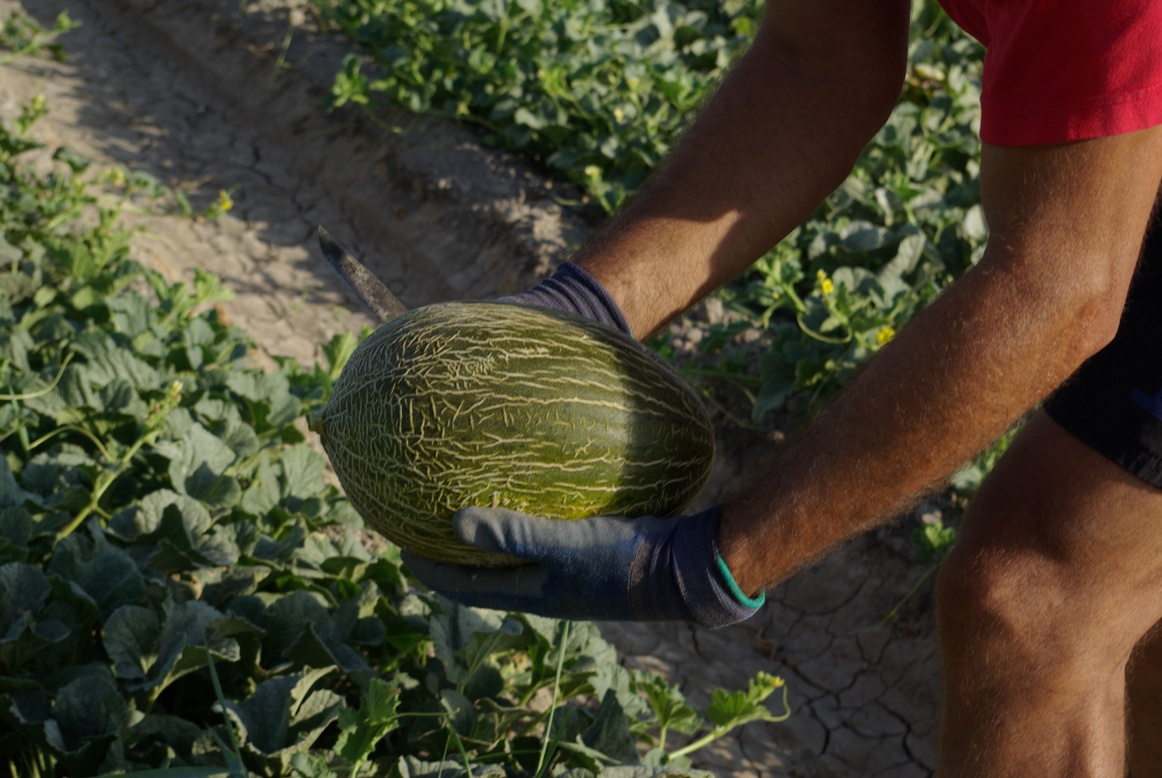Lots of activity in fields surrounding San Fulgencio as the local melon crop is currently in the process of being harvested.
The planting takes place in early April with the melons growing to maturity in about a hundred days. Picking the melons has been taking place for the last 10 days or so and should be completed this coming week.
Spain is the world’s largest exporter of melons, the main cultivation areas being the provinces of Valencia and Castellón (Valencian Community), Cuenca and Ciudad Real (Castile-La Mancha), the province of Almería (Andalusia), Murcia, Extremadura, and the Region of Madrid.
Among the varieties grown in Spain, there are three native green melons. The Piel de sapo, a favourite of our local farmers, is an elongated melon ranging in weight from one and a half to two and a half kilos (3.3 to 5.5 lb), with green rind and dark mottling and yellowy-white flesh, with little aroma and a very sweet flavor. The La Mancha Melon is distinguishable by its non-fibrous flesh and great sweetness and juiciness. The Rochet melon, which has oblong fruits and weighs between one and a half and two kilos (3.3 to 4.4 lb), has smooth, green skin and compact flesh, a yellowy-white colour, little aroma and a very sweet flavour. That particular variety has fallen out of favour amongst local growers, however, in recent years.
There is also the Tendral which is a winter melon, rounded or elongated in shape, weighing between two and three kilograms (4.4 to 6.6 lb), with rough, dark-green rind and white, flavoursome, sweet flesh. This variety is also predominant in the area around San Fulgencio and Elche.





